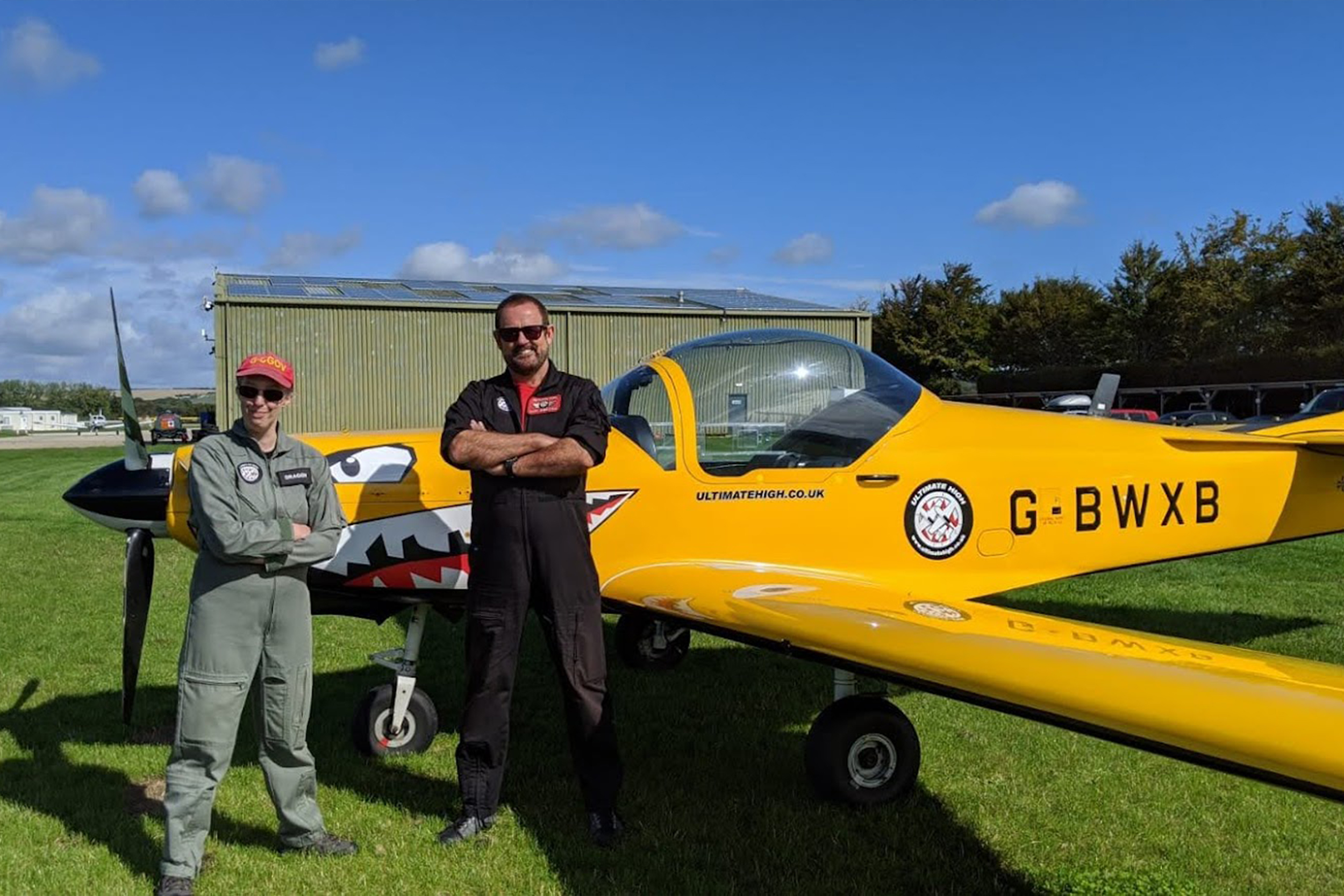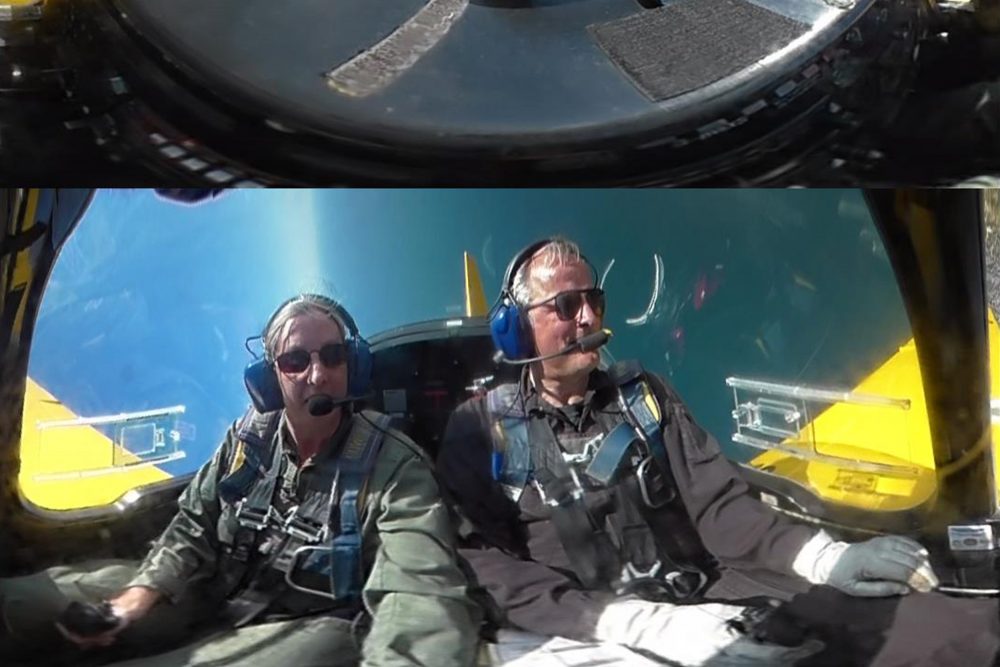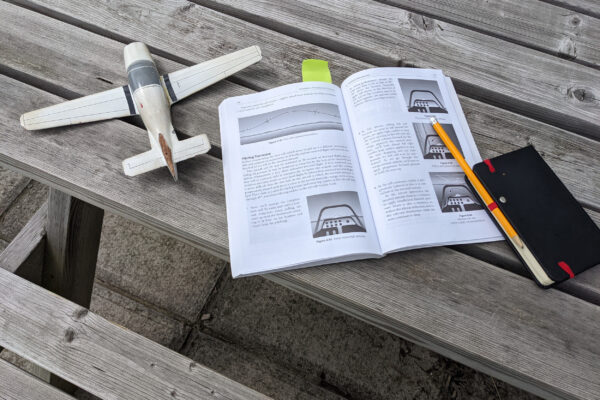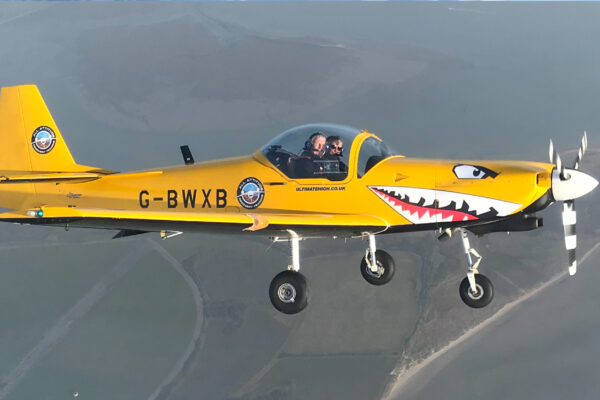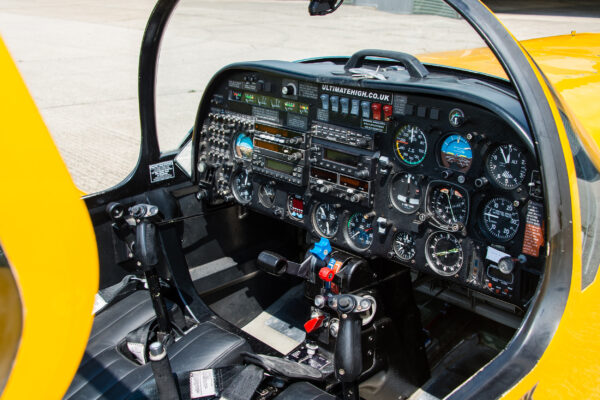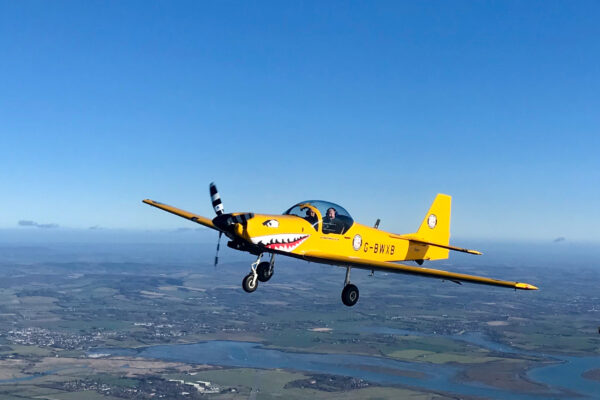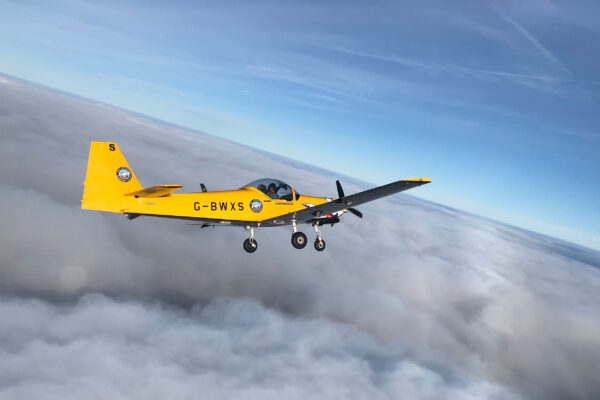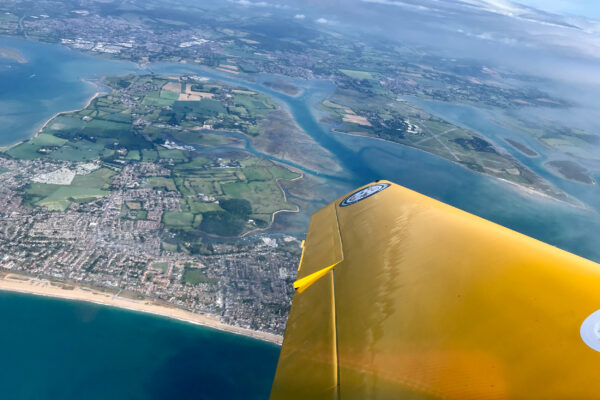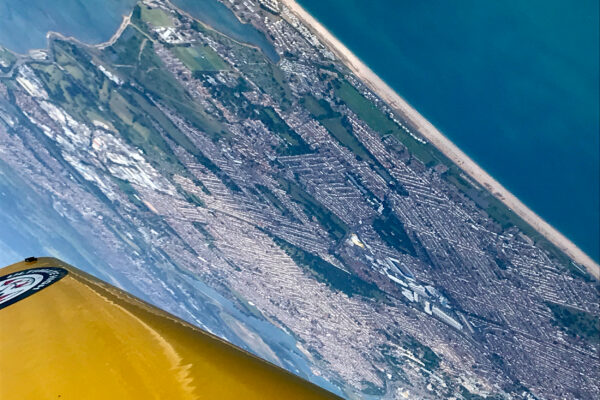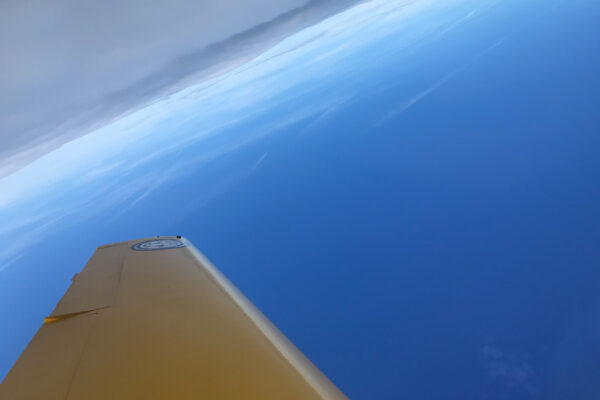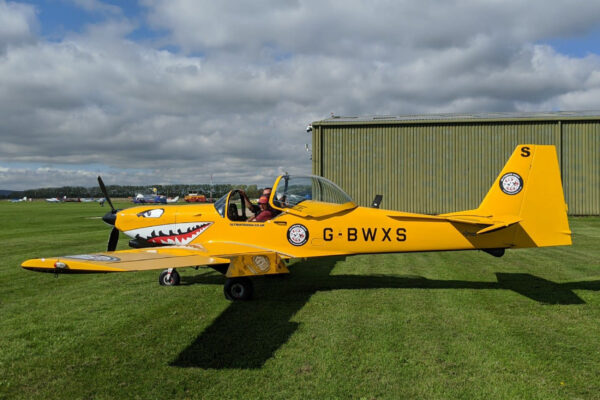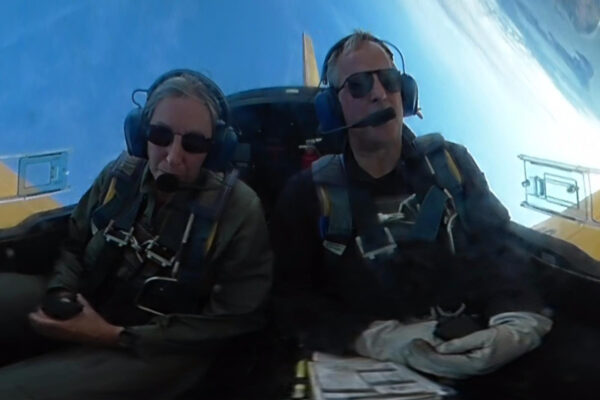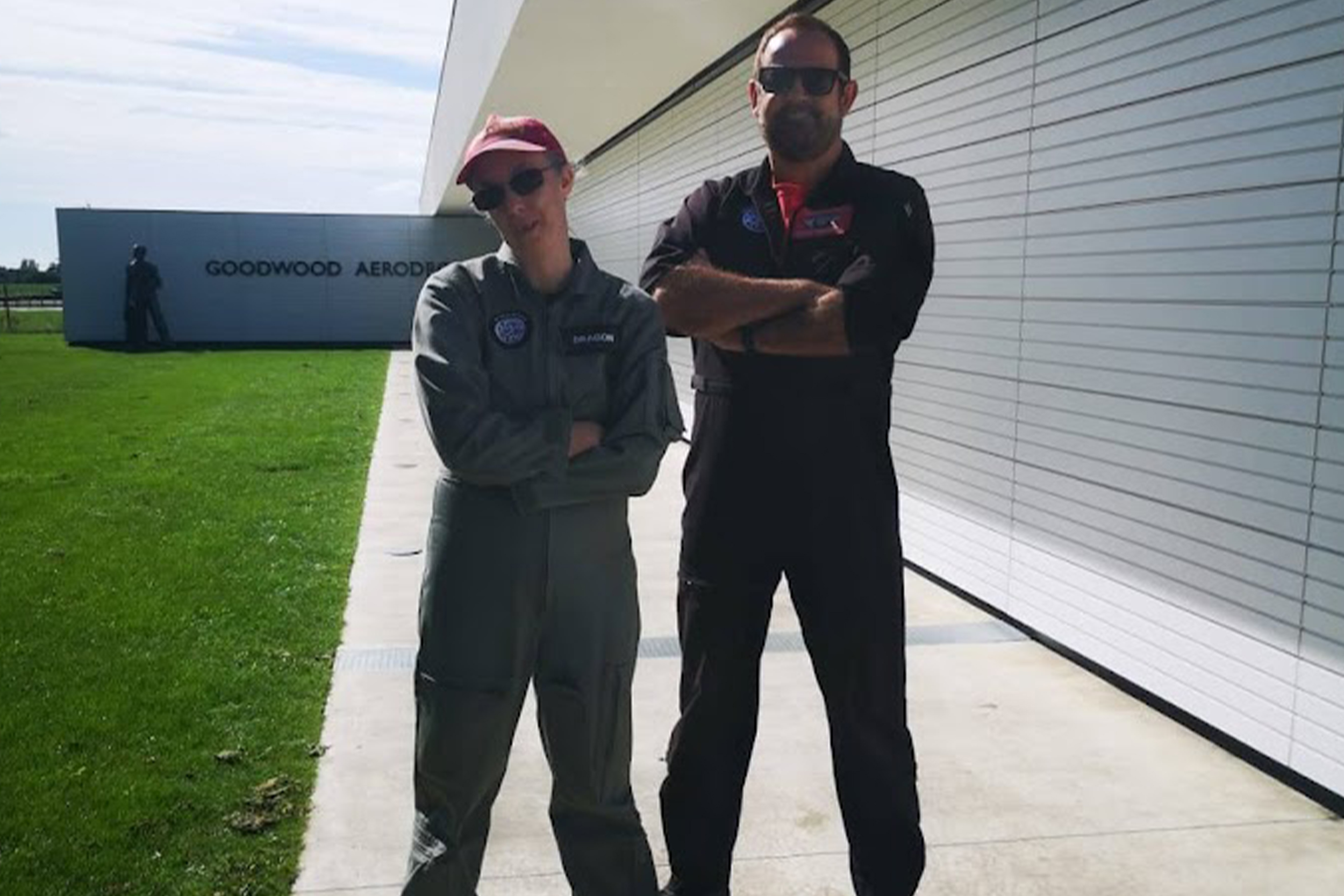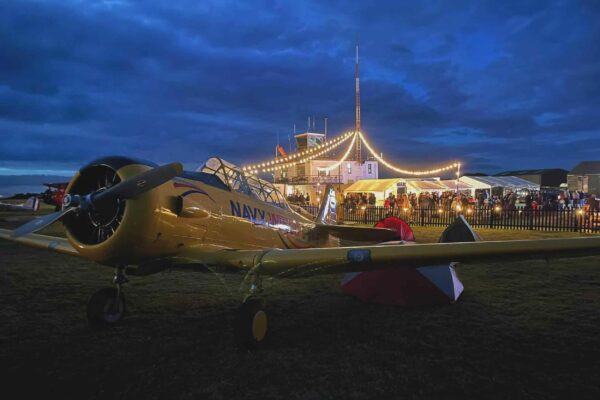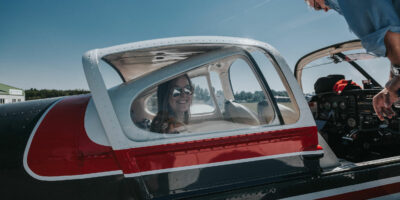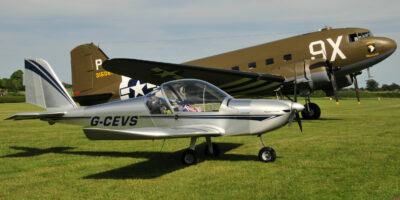The pace was made sustainable only by the fact that the instructors were very clear on aims – geometrically perfect figures were not what was called for. Recognisable was adequate, and safe was what really mattered.
The mantra, which wasn’t written on the
whiteboard but was repeated aloud enough that it might as well have been, was: ‘Fly it to the limits, through the limits, recover with confidence’.
Being able to spot and recover when you’d messed up was as important as completing the manoeuvres successfully. Needless to say there were plenty of ‘naturally occurring’ upsets to recover from!
The cause of most of these when I was flying was generally too little control input rather than too much – too slow to pull up into the loop resulting in low speed at the top and a wobbly mush through the top or simply stalling it there, too slow to get full aileron in on the aileron roll. Being a weed, I needed both hands for this one, with the result that the nose had dropped too low by the time we came out.
It made me realise what a narrow range of control inputs and stick forces we generally fly around with, merrily in the middle of the aircraft’s envelope. Quite how much push was needed to maintain level inverted flight, or quite how soft and mushy the controls were as we gently buffeted our way through the top of the loop, was attention-getting and very alien at first. The temptation to slacken off during high stick forces, or ‘stir’ the stick around during low ones was initially hard to resist. Especially if you were concentrating on something else – in early loops even turning my head to find my next visual reference was enough to make me unconsciously stop pulling!
That final day and a little three-figure sequence was immensely good fun, even though it took me multiple attempts to join it all together. The first time spotting an aircraft out of the corner of my eye at the top of a loop made me knock it off, the second I belted out of the loop too low and close to our base height.
But there was something gleeful about the fact of joining it all up, flowing around the sky really truly in all three dimensions. It was not at all diminished by the fact I was only a single breath ahead of the aeroplane in furious concentration!
I’d recommend it to everyone. Even if you don’t do the whole lot – even if you just do the upsets and a few loops and rolls it’ll add something delightful to your flying and improve all sorts of other things. Lookout, decision making, accuracy, confidence.
My aim for the course as typed into the pre-course survey was to simply regain currency and confidence in a more entertaining way than just bimbling round the patch. In the end it was so delightfully, exhaustingly, wildly more than that!


